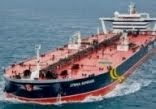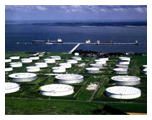Exploration activity on the Norwegian shelf remains vigorous, the Norwegian Petroleum Directorate says. Thirteen new discoveries have been made this year, the largest of these in the Norwegian Sea.
Eight exploration wells are currently being drilled. As of 24 June, 33 exploration wells have been spudded and 33 terminated. For comparison, the number of exploration wells spudded in the first six months of 2013 was 28.
So far this year, 23 wildcat wells and 10 appraisal wells have been drilled. Thirteen new discoveries have been made -- seven in the North Sea, three in the Norwegian Sea and three in the Barents Sea.
North Sea
Exploration in the North Sea is down somewhat as a consequence of the final delineation of the Johan Sverdrup discovery. Statoil Petroleum has made six discoveries and Total E&P Norge has made one. The discoveries are all small and close to existing fields.
The southernmost discovery was made east of the Heimdal field in the central part of the North Sea. Here Total has proven oil in wildcat well 25/5-9 in the Heimdal formation in the Palaeocene. Preliminary estimates place the size of the discovery between 0.5 and 2 million Sm3 of recoverable oil.
Statoil proved oil in well 30/11-9 A in the southwestern part of the Oseberg area. The well was drilled as a sidetrack from well 30/11-9 S, which was terminated in 2013. Oil was proven in the Heather formation in the Upper Jurassic and in the Brent group in the Middle Jurassic. In total, the two wells -- 30 /11-9 4 S and A -- have proven between 3 and 7 million Sm3 of recoverable oil equivalents.
Near the Fram field in the northeastern part of the North Sea, Statoil discovered oil in well 35/11-17 in the Fensfjord formation in the Upper Jurassic and in the Brent group in the Middle Jurassic. Preliminary estimates indicate that this discovery is between 1 and 3 million Sm3 recoverable oil equivalents.
The greatest exploration activity has been in the Gullfaks area in the northern part of the North Sea, where Statoil has made four discoveries in Jurassic reservoir rocks. Oil and gas were proven in wells 34/10-54 S and A, the latter drilled as a sidetrack. Preliminary estimates of the size of the two discoveries indicate a total of between 3 and 12 million Sm3 recoverable oil equivalents.
Petroleum has been proven in well 34/10-C-18 A between the Gullfaks and Visund fields. Preliminary estimates place the size of this discovery between 0.2 and 1 million Sm3 recoverable oil equivalents. Well 34/8-17 S, drilled just east of the Visund field, proved oil and gas. The size of the discovery is estimated at between 0.5 and 2 million Sm3 recoverable oil equivalents.
Norwegian Sea
Three discoveries have been made in the Norwegian Sea in the first half of this year. Southwest of the Njord field, VNG Norge AS proved oil and gas in well 6406/12-3 S (Pil) in the Rogn and Melke formations in the Upper Jurassic. A 226-m hydrocarbon column was proven, of which 135 m are oil in a reservoir with good flow properties.
The preliminary size estimate for the discovery is between 6 and 21 million Sm3 of recoverable oil and between 2 and 6 billion Sm3 recoverable gas. This is the largest discovery made on the Norwegian shelf so far this year.
Further north in the Åsgard area, gas/condensate was proven in well 6407/1-7 in the Lange formation in the Lower Cretaceous. Preliminary estimates indicate that the discovery contains between 1 and 4 million Sm3 of recoverable oil equivalents.
Further north, just south of the Heidrun field, Faroe Petroleum Norge has made a minor oil and gas discovery in well 6507/10-2 S in the Garn formation in the Middle Jurassic. The preliminary estimate is that this discovery contains between 1 and 2.5 million Sm3 of recoverable oil equivalents.
Barents Sea
Three discoveries have been made in the Barents Sea. Northwest of the Johan Castberg discovery, Statoil found gas in well 7220/4-1 in the StØ and Nordmela formations in the Jurassic, and deeper in the Snadd formation in the Triassic. Preliminary estimates place the size of the discovery between 2 and 4 million Sm3 recoverable gas.
Further south in the same area in well 7220/7-3, Statoil discovered gas in the StØ formation and oil deeper in the StØ and Nordmela formations. Preliminary estimates indicate that this discovery is between 7 and 10 million Sm3 of recoverable oil equivalents.
Northeast of the SnØhvit area, Det norske oljeselskap proved a small volume of oil in well 7222/11-2. The discovery was made in the Kobbe formation in the Triassic.
Eight exploration wells are currently being drilled on the Norwegian shelf -- four wildcat wells and four appraisal wells. Some of these will soon be completed, one of which is well 6406/12-3 A, operated by VNG. This well is being drilled on the Bue prospect near well 6406/12-3 S, where VNG recently proved gas and oil in the Pil prospect southwest of the Njord field in the Norwegian Sea.
In the Barents Sea, three wells are nearing completion. Well 7324/7-2, operated by OMV Norge, is being drilled near the 7324/8-1 discovery, (Wisting Central), which OMV proved in 2013. Both well 7324/7-2 and the Statoil-operated well 7325/1-1 are being drilled in the Hoop area in the northern Barents Sea.
Appraisal well 7120/1-4 S is also nearing completion. This well is being drilled by Lundin Norway on the 7120/1-3 (Gohta) discovery north of the SnØhvit area. This discovery was proven in 2013.
Robust exploration activity is expected to continue for the remainder of the year, with exploration wells planned in the North Sea, Norwegian Sea and Barents Sea.
No plans for development and operation have been submitted for discoveries on the Norwegian shelf in the first half of 2014.
Providing useful resources, articles and writings on crude oil, other petroleum products, energy and gas. By ExportGeneral Corporation and services, UK, online.

 ExportGeneral Corp is a leader in the of Nigerian Bonny Light Crude Oil (BLCO) sales market. As a privately held company, Export General Corp is committed to and is focused on delivering reliable services to all her clients.
ExportGeneral Corp is a leader in the of Nigerian Bonny Light Crude Oil (BLCO) sales market. As a privately held company, Export General Corp is committed to and is focused on delivering reliable services to all her clients.  Export General Corporation has an excellent track record of reliability in the supply of Bonny light crude oil, BLCO. We protect our buyers with 2% Performance Bond while we also expect protection from our customers with bank instrument from the world's top banks. We deliver on TTO, TTT, CIF and FOB basis.
Export General Corporation has an excellent track record of reliability in the supply of Bonny light crude oil, BLCO. We protect our buyers with 2% Performance Bond while we also expect protection from our customers with bank instrument from the world's top banks. We deliver on TTO, TTT, CIF and FOB basis.

